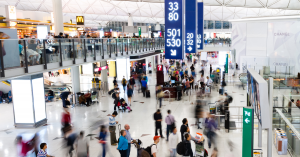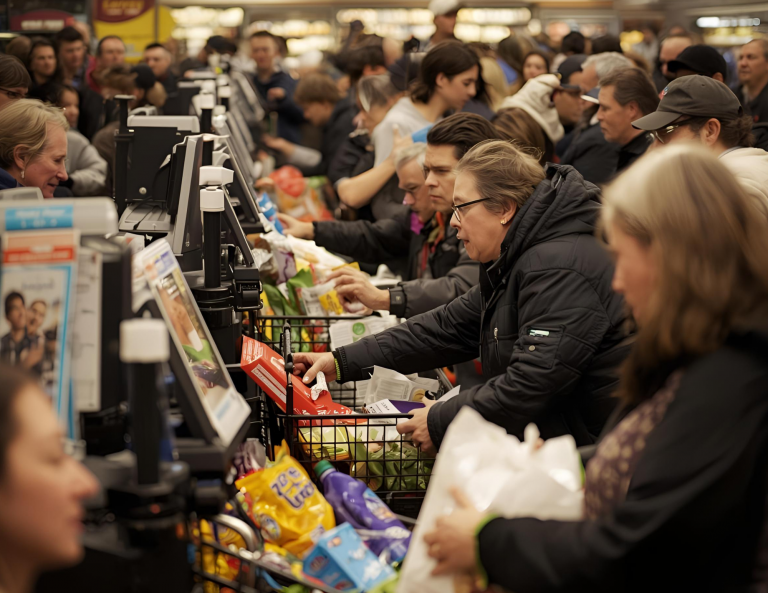In transportation hubs, every minute matters. Whether in airports, train stations, or other travel centers, passengers have limited windows of time before boarding.
These brief dwell moments represent powerful opportunities for retailers, duty-free operators, and quick-service restaurants. The challenge? Turning those minutes into measurable revenue.
That’s where transportation retail analytics comes in. By combining airport retail analytics, shopper journey mapping, and retail media measurement, Walkbase helps operators transform crowded terminals into efficient, profitable retail environments. Beyond simply tracking foot traffic, Walkbase provides deep passenger flow insights, operational intelligence, and end-to-end ROI attribution — ensuring that each retail touchpoint delivers value.
Explore Walkbase transportation solutions.
What Is Transportation Retail Analytics?

Transportation retail analytics is the practice of collecting, analyzing, and activating shopper data within high-traffic travel environments such as airports, train stations, and bus terminals. It goes far beyond simple traffic counting. Instead, it focuses on shopper journey mapping and passenger flow analytics to reveal how travelers interact with retail spaces, concessions, and media placements.
Unlike static reports, transportation retail analytics delivers real-time, actionable insights:
- Where do passengers dwell before boarding?
- Which retail zones generate the most conversions?
- How do bottlenecks or queues impact spend potential?
For operators, this means having the intelligence to optimize layouts, reduce friction in the shopping experience, and activate targeted travel retail insights that drive higher sales.
Why Passenger Flow Analytics Matters in Travel Retail
Passenger flow is the heartbeat of every transportation hub. Understanding how travelers move through terminals is critical for both operational efficiency and retail optimization.
Shopper Journey Mapping in Airports and Train Stations
Mapping the shopper journey reveals key zones of engagement: high-dwell waiting areas, security bottlenecks, boarding gates, and premium duty-free corridors. By tracking movement and dwell times, operators can identify where to strategically position concessions, quick-service restaurants, or promotional displays.
Queue analytics also play a vital role. Walkbase TREQ Queue Analytics monitors wait times and passenger load at security, check-in, and retail queues, helping staff make real-time adjustments. This not only enhances customer satisfaction but also maximizes shopping opportunities within limited dwell periods.
Linking Passenger Flow Analytics to Retail Opportunities
Passenger flow analytics isn’t just about improving movement — it’s about uncovering retail potential. By measuring audience engagement in retail areas, operators can align staffing, promotions, and product placement with peak passenger flows.
Consider an airport duty-free shop: analyzing how many passengers pass by, stop, and purchase provides insights into conversion rates and campaign effectiveness. Similarly, a quick-service restaurant located near a high-traffic boarding zone can adjust staffing during peak departure waves.
Walkbase Traffic Analytics provides the foundation for these insights, enabling airports and station operators to turn flow patterns into profitable retail strategies.
Measuring Retail Media in Transportation Hubs
 Transportation hubs are among the most valuable venues for retail media and digital out-of-home (DOOH) campaigns. High visibility, diverse demographics, and extended dwell times create a premium environment for advertisers. But until recently, proving ROI was difficult.
Transportation hubs are among the most valuable venues for retail media and digital out-of-home (DOOH) campaigns. High visibility, diverse demographics, and extended dwell times create a premium environment for advertisers. But until recently, proving ROI was difficult.
With Walkbase, in-store attribution analytics connects DOOH and programmatic ad placements directly to sales performance. For example, a campaign promoted on digital signage and airline apps can be measured against actual purchases made in duty-free shops or QSR outlets.
By tying media impressions to conversions, Walkbase gives operators and advertisers the confidence to scale retail media networks in transportation hubs. Partnerships such as Vistar Media’s inventory in U.S. airports highlight the growing opportunity to monetize travel environments with measurable impact.
Walkbase in Action — From In-Store Analytics to Results
Walkbase solutions are already transforming transportation retail with measurable outcomes:
- Heatmaps for smarter layouts: By analyzing passenger flow, airports can position promotions and merchandise in high-visibility zones, reducing congestion and increasing conversion.
- Queue reduction with real-time data: Queue analytics help operators reallocate staff, shorten lines, and increase dwell time in retail areas.
- Proving campaign ROI: In-store attribution demonstrates how digital ads, loyalty offers, or airline app promotions directly influence purchases.
- Upselling opportunities: Duty-free operators and QSR outlets can analyze purchase patterns to recommend complementary products, boosting per-passenger spend.
Together, these insights provide a holistic view of transportation retail performance, from passenger journey to revenue attribution.
The Future of Airport Retail Analytics

As passenger expectations evolve, the future of airport retail analytics lies in personalization, integration, and connected ecosystems.
- Personalization: By combining loyalty program data with passenger flow insights, operators can deliver dynamic offers — such as time-sensitive duty-free discounts for boarding groups.
- Integration: Walkbase data can integrate with kiosks, boarding passes, and airline apps, linking passenger touchpoints across the travel journey.
- Connected Ecosystems: Transportation hubs can become intelligent retail environments where every interaction — from digital signage impressions to in-store purchases — is tracked, measured, and optimized.
Walkbase sits at the center of this transformation, enabling operators to deliver smarter, data-driven retail strategies that maximize both passenger satisfaction and revenue.
From Transit to Transformation: Making Every Minute Count
In airports, train stations, and travel hubs, passengers have only moments to make retail decisions. Transportation retail analytics and airport retail analytics ensure those moments deliver measurable business outcomes.
Walkbase provides the full toolkit: passenger flow insights, shopper journey mapping, retail media measurement, and proven ROI attribution. The result? Smarter retail operations, stronger advertising impact, and increased per-passenger spend.
Discover how Walkbase transforms transportation retail into a connected, data-driven ecosystem. Learn more about Walkbase solutions for transportation hubs.




